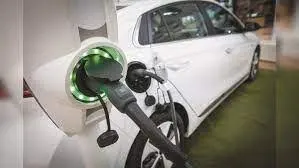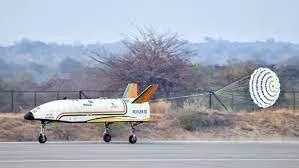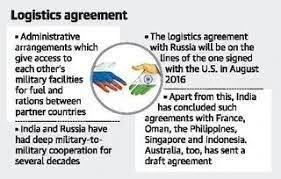UPSC GS 1
UNESCO Creative Cities Network (UCCN)
- News: Kozhikode in north Kerala has been declared as India’s first UNESCO ‘City of Literature’.
- Creation and Purpose:
-
- The UNESCO Creative Cities Network (UCCN) was established in 2004 to promote cooperation among cities that have identified creativity as a strategic factor for sustainable urban development.
-
- Network Composition: Almost 300 cities around the world are currently part of this network.
- Objective: The primary goal is to place creativity and cultural industries at the heart of development plans at the local level and to foster active cooperation at the international level.
- Fields of Creativity: UNESCO designates creative cities in seven fields:
-
- Craft and Folk Art
- Media Arts
- Film
- Design
- Gastronomy
- Literature
- Music
-
- Application Process:
-
- Every year, UNESCO invites applications from various cities worldwide to join the UCCN project. In India, these applications are routed through the Ministry of Culture.
-
- Kozhikode:
-
- Kozhikode also known as Calicut, is a city in the state of Kerala in southern India on the Malabar coast.
- Kozhikode was dubbed the “City of Spices” for its role as the major trading point of Eastern spices.
- On 7 June 2012, Kozhikode was given the tag of “City of Sculptures”(Shilpa Nagaram) because of the various architectural sculptures located in various parts of the city.
- Foreign travellers:
- Ibn Battuta (author of Rihla) visited the city in the 14th Century.
- Portuguese explorer Vasco da Gama & Persian ambassador Abdur Razzaq visited the city in the 15th century.
-
Read more: Management of Nuclear Waste: Challenges and Mitigation | UPSC
UPSC GS 2
Oath of Members of Parliament
- News: Members of the 18th Lok Sabha will begin taking oath on 25th June.
- Term of a Lok Sabha MP:
-
- Lok Sabha MP’s Term: The five-year term of a Lok Sabha MP begins when the Election Commission of India (ECI) declares the results, as per Section 73 of the Representation of the People Act, 1951.
- Rights as Elected Representatives: From the day the results are declared, MPs are eligible for certain rights as elected representatives.
- Anti-Defection Law: Starting their term also means that if MPs change their party allegiance, their political party can request the Speaker to disqualify them from Parliament under the anti-defection law.
-
- Requirements for an MP to Participate in Lok Sabha:
-
- Election and Term Start: Winning the election and starting the term does not automatically allow an MP to participate in House proceedings.
- Oath or Affirmation: To debate and vote in Lok Sabha, an MP must take a seat in the House by making and subscribing to an oath or affirmation as prescribed in the Constitution (Article 99).
- Financial Penalty: The Constitution specifies a financial penalty of Rs 500 if a person participates or votes in House proceedings without taking the oath (Article 104).
- This is the only financial penalty mentioned in the Constitution.
- Exception for Ministers: An individual can become a minister without being elected to Parliament.
- They have six months to secure a seat in either Lok Sabha or Rajya Sabha. During this time, they can participate but not vote in House proceedings.
-
- Parliamentary Oath:
-
- Text of the Oath: The text of the parliamentary oath is found in the third schedule of the Constitution.
- Submission of Election Certificate: Before taking the oath, MPs must submit their election certificate to the Lok Sabha staff.
- This requirement was introduced after a 1957 incident where a mentally unsound individual posed as an MP and took the oath.
- Language of the Oath: Once verified, MPs can take the oath or affirmation in English or any of the 22 languages specified in the Constitution.
- Approximately half of the MPs take their oath in Hindi or English.
- Sanskrit has also become a popular choice in recent Lok Sabhas.
- Exact Text and Name: MPs must use the name mentioned in their election certificate and adhere to the exact text of the oath.
- Choice of Swearing: MPs can choose between swearing in the name of God or making a solemn affirmation.
- Attendance Requirement: The Constitution specifies that if an MP does not attend Parliament for 60 days, their seat can be declared vacant.
- Courts have used this ground to allow MPs in jail to take an oath in Parliament.
-
New Standards To Enhance Safety And Quality Of Electric Vehicles
- News: The Bureau of Indian Standards (BIS) has introduced two new safety standards for electric vehicles, IS 18590: 2024 and IS 18606: 2024.
- Safety Standards for Powertrain and Batteries:
-
- The new standards ensure that the critical component of electric vehicles—the powertrain—of electric vehicles in the L, M, and N categories meets strict safety requirements.
- They also emphasize the performance and security of the batteries used in electric vehicles.
-
- Standard for E-Rickshaws and E-Karts:
-
- BIS has introduced another standard, IS 18294: 2023, specifically for E-rickshaws and E-Karts.
- This standard covers all aspects from construction to functionality to ensure the safety of both drivers and passengers.
-

- Total Standards for Electric Vehicles:
-
- BIS now has a total of 30 standards dedicated to electric vehicles and their accessories, including charging systems.
-
- Importance of the New Standards:
-
- These new standards are essential for promoting a sustainable, environmentally friendly, and efficient transportation system in India.
-
Telecommunications Act, 2023
- News: Recently, the Union Government issued a Gazette Notification to enforce specific sections of the Telecommunications Act, 2023. The sections now in effect are 1, 2, 10 to 30, 42 to 44, 46, 47, and 50 to 58, as well as 61 and 62.
- Purpose and Scope:
-
- The Telecommunications Act, 2023 aims to modernize and consolidate the laws governing the development, expansion, and operation of telecommunication services and networks.
- It also addresses the assignment of spectrum and other related issues.
-
- Replacement of Outdated Laws:
-
- This new Act supersedes older laws such as the Indian Telegraph Act, 1885, and the Indian Wireless Telegraph Act, 1933, to reflect the significant technological advancements in the telecom sector.
-
- Promotion of Digital Implementation:
-
- The Act encourages digital solutions, including frameworks for online dispute resolution and other digital implementations.
-
- Guiding Principles:
-
- The Act is guided by four key principles: Inclusion (Samavesh), Security (Suraksha), Growth (Vriddhi), and Responsiveness (Tvarit).
-
- Key Features:
- Clear Definitions:
-
- The Act clearly defines various telecom-related terms, reducing uncertainties and improving investor confidence, thereby aiding in ease of doing business.
-
- Effective Right of Way (RoW) Framework:
-
- The Act provides an effective Right of Way (RoW) framework for both public and private properties. It includes government agencies, local bodies, and PPP projects like airports, seaports, and highways.
- Note: Under this framework, a public entity that owns the land must grant ‘right of way’ permission expeditiously unless it provides substantive grounds for refusal.
-
- Telecommunication Infrastructure as Separate Entity:
-
- Telecommunication infrastructure will be considered separate from the property it is on, reducing disputes when the property is sold or leased.
-
- Establishment of Common Ducts and Cable Corridors:
-
- The Central Government will establish common ducts and cable corridors, aligning with the PM Gati Shakti vision.
-
- Standards and Conformity Assessments:
-
- The Act empowers the setting of standards and conformity assessments for telecommunication services, networks, and security to ensure national security and promote Indian technology.
-
- Universal Service Obligation Fund (USOF):
-
- The USOF has been expanded to support services in underserved areas and fund research and development of telecom services and technologies.
-
Read this: Green Technologies: Meaning, Types, Opportunities and Challenges | UPSC
UPSC GS 3
Lunar Gateway Programme
- News: India and the US have finalized a Strategic Framework to explore opportunities for participation in the program.
- Overview:
-
- The Lunar Gateway Programme is an international collaborative project aimed at establishing a space station in orbit around the Moon.
-
- Connection to Artemis Program:
-
- The programme is a part of NASA’s Artemis program, designed to support long-term human exploration of the Moon and beyond.
- The Artemis programme is a NASA-led initiative to return humans to the Moon by 2025, with the ultimate goal of expanding space exploration to Mars and beyond.
-
- Launch Date: No earlier than 2025.
- Orbit: Polar orbit, specifically a near-rectilinear halo orbit.
- Objectives: To facilitate regular missions to the lunar surface and serve as a base for astronauts.
- Collaborative Effort: Spearheaded by NASA, the Lunar Gateway is a collaborative effort involving:
-
- European Space Agency (ESA)
- Canadian Space Agency (CSA)
- Japan Aerospace Exploration Agency (JAXA)
- Mohammed Bin Rashid Space Centre (MBRSC), UAE
-
- Comparison with ISS:
-
- The Gateway Station is similar to the International Space Station (ISS), currently in low Earth orbit (LEO), but the Gateway will orbit the Moon.
- The Gateway will be the first space station to exist outside of LEO.
-
Dodol
- News: Goa Government has formally applied for a Geographical Indication (GI) tag for the Goan sweet called Dodol.
- Description:
-
- Dodol is a pudding-like, classic Goan sweet that is often referred to as a cousin of Bebinca, the Queen of Goan desserts.
-
- Historical Background:
-
- In Goa, it is believed that this sweet was introduced during Portuguese rule in the 17th century.
-

- Appearance and Occasions:
-
- The dish is dark brownish in color and is often served during Christmas celebrations.
-
- Popularity in Other Regions:
-
- Dodol and its variations are also popular in southern India, Sri Lanka, Indonesia, Thailand, Malaysia, and parts of Southeast Asia.
-
V-LEX-02 Mission
- News: Recently, ISRO successfully carried out the third landing experiment for its reusable launch vehicle (RLV LEX) at the Aeronautical Test Range in Chitradurga, Karnataka.
- Final Landing Experiment: The RLV-LEX-02 mission is the third and final test in a series of landing experiments conducted at the Aeronautical Test Range in Chitradurga, Karnataka.
- Mission Goal: The main objective was to demonstrate the reusable launch vehicle’s (RLV) ability to land autonomously under challenging conditions after being released from a helicopter.
- Lift and Release: The winged vehicle, Pushpak, was lifted to an altitude of 4.5 km by an Indian Air Force Chinook helicopter and released.
- Autonomous Landing: Pushpak navigated towards the runway, made necessary corrections, and landed accurately using a brake parachute, landing gear brakes, and a nose wheel steering system.

- Reusability and Collaboration
-
- Reused Systems: The flight systems and winged body from the RLV-LEX-01 mission were reused in RLV-LEX-02 after obtaining the required certifications and clearances.
- Collaborative Effort: The mission was a joint effort involving the Vikram Sarabhai Space Centre (VSSC), the Liquid Propulsion System Centre (LPSC), and the ISRO Inertial Systems Unit (IISU).
-
- About the Reusable Launch Vehicle (RLV):
-
- Design and Performance: The RLV is designed as a space plane with a low lift-to-drag ratio, necessitating high glide angles and high-speed landings at 350 km/h.
- Indigenous Systems: It features locally developed systems, including navigation systems based on pseudolite technology, as well as ISRO-developed instrumentation and sensors.
-
India-Russia- Draft Logistics Agreement
- News: In a significant development aimed at bolstering military cooperation, the Russian government has approved a draft logistics agreement with India.
- Purpose of the Agreement:
-
- The logistics pact aims to facilitate mutual logistical support during various military operations, including peacekeeping missions, humanitarian assistance, and joint military exercises.
-
- Simplified Military Exchanges:
-
- The agreement will streamline military-to-military exchanges for exercises, training, port calls, and Humanitarian Assistance and Disaster Relief (HADR) efforts.
- This support includes essential services such as refueling, maintenance, and supply provisions, enhancing interoperability between the armed forces.
-
- Duration and Renewal:
-
- Once accepted, the agreement will be effective for five years and will automatically renew unless either party decides to terminate it.
-

- Continuation of Military Relationship:
-
- This draft logistics pact continues the longstanding military relationship between Russia and India.
- In 2021, the two countries signed a comprehensive agreement on military-technical cooperation extending until 2030.
-
- Similar Agreements:
-
- India has similar logistics agreements with several countries, including the United States, France, South Korea, Singapore, Australia, and Japan.
-
- Strategic Benefits:
-
- These pacts have been crucial in enhancing India’s strategic reach and operational readiness, enabling longer and more complex military deployments.
-
- India’s Logistics Agreements with Various Countries:
-
- India & Russia: Reciprocal Exchange of Logistics Agreement (RELOS)
- India & Australia: Mutual Logistics Support Agreement (MLSA)
- India & Japan: Allows Close Coordination of Services (ACSA)
- Between India & USA:
- General Security of Military Information Agreement (GSOMIA), 2002: To facilitate sharing military intelligence.
- Logistics Exchange Memorandum of Agreement (LEMOA), 2016: Allows mutual use of military logistics facilities.
- Basic Exchange and Cooperation Agreement (BECA), 2020: Provides India access to
- U.S. geospatial intelligence data.
- Communications Compatibility and Security Agreement (COMCASA), 2018: Enables the transfer of encrypted communication equipment
-

